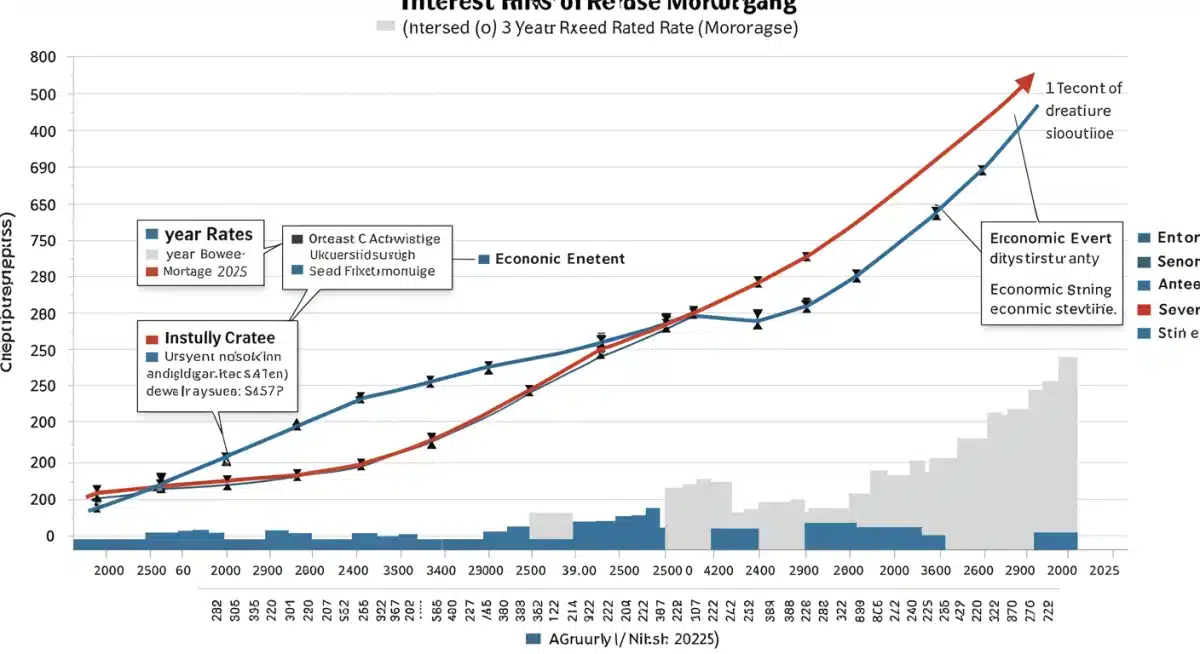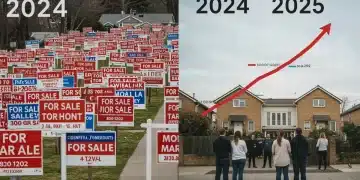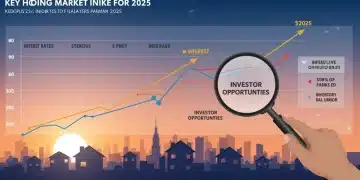Expert Analysis: Economic Indicators Shaping 2025 Housing Market

Expert analysis reveals how current economic indicators are actively shaping the 2025 housing market. Factors like inflation, interest rates, and employment trends are critical in determining future housing affordability and investment opportunities.
Breaking news for homeowners, prospective buyers, and investors: an Expert Analysis: How Economic Indicators are Shaping the 2025 Housing Market (INSIDER KNOWLEDGE) reveals critical insights into what lies ahead. This timely report unpacks the forces at play, offering a forward look at the evolving real estate landscape.
Understanding the Current Economic Landscape
The current economic climate is a complex tapestry of intertwined factors, each playing a significant role in dictating the trajectory of the housing market as we approach 2025. Recent data, as of [current date], indicates persistent inflationary pressures and a Federal Reserve committed to monetary tightening. These elements collectively paint a picture of cautious optimism mixed with significant headwinds for real estate.
Analysts are closely monitoring consumer spending habits and global supply chain adjustments, which continue to influence material costs and labor availability in the construction sector. The interplay between these macroeconomic forces directly impacts the cost of building new homes and the overall affordability for buyers, setting the stage for the coming year.
Inflationary Pressures and Their Housing Impact
Inflation remains a primary concern for economists and market participants. Elevated inflation erodes purchasing power and often prompts central banks to implement tighter monetary policies, directly affecting mortgage rates.
- Cost of Materials: High inflation drives up prices for lumber, steel, and other construction materials, increasing new home costs.
- Labor Wages: Rising wages, while beneficial for workers, can add to construction expenses, passed on to consumers.
- Consumer Confidence: Persistent inflation can dampen consumer confidence, leading to delayed home-buying decisions.
Interest Rate Trajectories for 2025
Interest rates are arguably the most influential factor in housing market dynamics, directly affecting affordability and buyer demand. The Federal Reserve’s stance on combating inflation through rate hikes has been a dominant theme throughout the past year, and its ripple effects are expected to extend well into 2025.
Recent statements from Fed officials, as reported on [latest news date], suggest a continued data-dependent approach, meaning future rate adjustments will hinge on inflation metrics and employment figures. This creates a degree of uncertainty but also provides a framework for anticipating potential shifts in mortgage rates.
Federal Reserve Policy and Mortgage Rates
The Federal Reserve’s benchmark interest rate directly influences the cost of borrowing for banks, which in turn affects mortgage rates offered to consumers. A hawkish Fed policy typically translates to higher mortgage rates.
- Quantitative Tightening: The Fed’s balance sheet reduction efforts also contribute to higher long-term interest rates.
- Market Expectations: Investor expectations about future Fed actions can cause mortgage rates to fluctuate even without direct policy changes.
- Impact on Affordability: Higher rates significantly increase monthly mortgage payments, reducing the pool of eligible buyers.

Employment and Wage Growth Dynamics
A robust labor market with consistent wage growth is typically a strong foundation for a healthy housing market. However, the current environment presents a nuanced picture where strong employment figures coexist with inflationary pressures. This dynamic creates both support and challenges for housing affordability.
As of the latest Bureau of Labor Statistics report, unemployment remains low, and wage growth, while moderating slightly, is still evident. This provides potential buyers with the income necessary to qualify for mortgages, but the benefit can be offset by higher housing costs and interest rates.
Labor Market’s Dual Impact on Housing
The labor market’s strength can be a double-edged sword for housing. While employment ensures income, rapid wage growth can fuel inflation, leading to higher rates.
- Increased Demand: Stable employment and rising wages empower more individuals to enter the housing market.
- Inflationary Pressure: Strong wage growth can contribute to overall inflation, prompting further monetary tightening.
- Regional Disparities: Employment and wage growth vary significantly by region, creating localized housing market conditions.
Housing Supply and Demand Imbalances
The fundamental principles of supply and demand continue to exert immense pressure on the housing market. A persistent shortage of available homes, particularly in desirable urban and suburban areas, has been a defining characteristic of recent years. This imbalance is a key driver of elevated home prices, despite rising interest rates.
New construction, while showing signs of recovery in some segments, has struggled to keep pace with demographic shifts and household formation. Supply chain issues, labor shortages, and regulatory hurdles continue to impede a significant acceleration in home building, as noted by industry reports from [recent industry publication date].
Factors Constraining Housing Supply
Several factors are contributing to the ongoing tight housing supply, preventing the market from achieving a healthier balance.
- Construction Costs: High material and labor costs make new home construction more expensive, limiting builder activity.
- Zoning Regulations: Restrictive zoning laws in many municipalities constrain the development of higher-density housing.
- Existing Home Inventory: Many current homeowners with low mortgage rates are reluctant to sell, further limiting supply.
Demographic Shifts and Buyer Behavior
Long-term demographic trends are powerful underlying forces shaping the housing market, often subtly but consistently. The millennial generation, now in their prime home-buying years, continues to represent a significant portion of potential purchasers. Their preferences, financial situations, and lifestyle choices are critical in understanding future demand patterns.
Additionally, the increase in remote work has altered migration patterns, driving demand in previously less-sought-after areas. This shift, observed since early [year of remote work shift], continues to impact regional housing markets differently, as people seek affordability and quality of life outside traditional urban centers.
Generational Influence on Housing Demand
Each generation brings distinct housing preferences and financial considerations to the market, influencing overall demand.
- Millennial Homeownership: This large demographic cohort is a primary driver of first-time homebuyer demand.
- Boomer Downsizing: Older generations seeking to downsize can free up larger family homes but also compete for smaller, more accessible properties.
- Geographic Mobility: Remote work fosters greater geographic flexibility, redistributing housing demand across regions.
Government Policies and Regulatory Landscape
Government policies, both federal and local, play a crucial role in shaping the housing market through various mechanisms. These include fiscal policies, housing finance regulations, and local zoning ordinances. Changes in these areas can significantly alter affordability, access to credit, and the pace of new construction.
Recent legislative discussions, as covered by [government news outlet] on [recent policy discussion date], indicate ongoing efforts to address housing affordability challenges, though concrete measures and their impact remain to be seen. Any shifts in mortgage interest deduction rules or first-time homebuyer programs could have immediate effects.
Policy Impact on Housing Affordability and Development
Government actions can either alleviate or exacerbate housing market challenges, influencing both supply and demand sides.
- Monetary Policy: Federal Reserve actions on interest rates directly impact mortgage costs.
- Housing Finance Regulations: Rules governing Fannie Mae and Freddie Mac affect mortgage availability and terms.
- Local Zoning and Permitting: Local regulations dictate what can be built, where, and how quickly, affecting supply.
| Key Economic Factor | 2025 Housing Market Impact |
|---|---|
| Interest Rates | Projected to remain elevated, impacting affordability and buyer demand. |
| Inflation | Persistent inflation drives up construction costs and influences Fed policy. |
| Housing Supply | Continued shortages expected, sustaining upward pressure on home prices. |
| Employment | Strong labor market supports demand, but wage growth can fuel inflation. |
Frequently Asked Questions About the 2025 Housing Market
Elevated interest rates are expected to temper demand, potentially leading to a stabilization or slight decrease in home price appreciation. However, persistent inventory shortages could continue to provide price support in many regions, preventing significant drops.
Inflation will remain a key factor, driving up construction costs and potentially pushing the Federal Reserve to maintain higher interest rates. This combination makes housing less affordable, impacting both new construction and existing home prices for buyers.
Housing supply is projected to remain tight in 2025, largely due to ongoing construction challenges and homeowners reluctant to sell. While some new inventory will come online, it’s unlikely to fully meet demand, particularly in high-growth areas.
Remote work will continue to decentralize housing demand, boosting markets in more affordable, lifestyle-oriented regions. This trend allows buyers greater flexibility in choosing locations, potentially easing pressure in traditional urban centers while increasing it elsewhere.
Federal Reserve monetary policy on interest rates will be paramount. Additionally, potential changes in housing finance regulations, local zoning reforms, and any new first-time homebuyer incentives could significantly affect market dynamics and affordability.
Looking Ahead
As we navigate towards 2025, the housing market will continue to respond to a delicate balance of economic indicators. The Federal Reserve’s ongoing battle against inflation, coupled with the persistent challenges in housing supply, will dictate the pace and direction of price movements and affordability. Industry experts advise close monitoring of upcoming inflation reports and employment data, as these will be primary drivers for future policy decisions and market sentiment. The ability of new construction to ramp up and the evolving preferences of a diverse buyer base will also be crucial factors to watch, shaping the real estate landscape for years to come.





